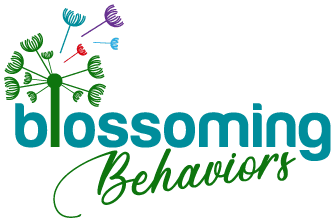Strategies
March 20, 2023 2024-11-24 10:41Strategies
Strategies

Joint Attention is one of the early building blocks of learning.
Reading a book together is an amazing way to work on joint attention and to embed literacy skills with your child.
Idea 1:
Begin by choosing a colorful interesting age-appropriate book. If you need help choosing, a book, ask the librarian for ideas or the book store attendant for current popular books. If your school has a book fair, the people working inside are excellent sources for referrals.
Begin by reading the first page together. Then read the remainder of the pages to your child. Be silly when it seems appropriate, show animation while reading. Keep focused on the book AND your child. Use the same book for the next week or two and do the same exact technique. Begin to point to some of the pictures on the first page that are the same as the words while you are saying the words.
Then after the first week, probe to see if your child will read some of the words. Only on the first page. You need to try to create success. Even if it’s only one word on that first page. Choose the easiest word to read. Kids seem to like animal words so if there is a picture of a dog on the first page, and the word dog, I’d probably use that one. I would read up to the word where dog is, without saying the word, pause and silently count to 15, if your child doesn’t say dog or something that sounds like dog, point to the picture of the dog, and make a D sound. If your child still doesn’t at least make the D sound, then you re-read the beginning of that sentence to your child, pause, and point right to the dog picture saying doooggggg. Hopefully they will join in. If they do not, then continue reading the book to them to the end as you always have been.
Try again doing the same thing the next day or later that day if that works for you both and the child is interested.
Continue doing this until the child says the word, a sound like D, Do or any form that sounds like dog. If this isn’t working, then whenever you come to the word say DOG and point to the dog picture, for a few more weeks. This can take a lot of patience, but once your child says a version of the word, get excited and say something like You can read, this is so exciting YAY! With big smiles. This reinforcement will help them to understand what you are attempting to get them to do which is read the words, and motivate them to try and say more word in the future. Once they say the word that you are teaching them several times, then move on to an additional word. Repeat this technique with the new word until they learn the next word.
Always make sure the book is really interesting, has appealing visuals, and is on a topic that your child is interested in.
I will make a video to help you visualize the technique.
Idea 2:
If the child is at an appropriate age, play I SPY SOMETHING _______
They need to know their colors to play this. Always model the behavior first say I SPY SOMETHING RED, (make sure it is obvious, like their shirt that is red, point to their shirt while saying it) If they get it correct, get excited and tell them something like yay! Awesome you got it right, now it’s your turn. Prompt them to say I SPY SOMETHING _________, always use something that is right their and easy to identify
Some ideas are: A gold shiny necklace, the yellow sun, the while moon, a black and white spotted dog, a red cell phone, a favorite green toy, anything bright colored that stands out
Being Proactive immediately upon Noticing triggered Student
- Check in with ourselves Find our Calm
- If you’ve learned crisis training. remember to use skills.
In very difficult moments when we are feeling nervous, stop, reset by breathing and count to 10
Be the calm that you wish they were at that moment
Think right now: is this maladaptive behavior or trauma response
Then use an intervention
Difficult Moments
What we can do when students are having difficulties
Interventions
Choose interventions depending on the behavior
- First — Then contingency Visual Boards work well
- Redirection of their proximity or attention
- Provide Choices to help them feel some control
- Timers great for transitions.
- Visual reminders such as laminated icons, schedules, reinforcement checklist
- Provide reminders What cool thing is next after this
- If itis a trauma response the student would likely respond best to comfort from the immediate
situation {examples are removal from extreme 1oud sounds, removal from being ignored,
removal fom extreme non comfort at being in spotlight, removal from being very Hungry,
removal from scenes in videos that may tngger past trauma memories) - ATrauma response can be an experience of overwhelming fear and a desperate attempt to
create safety


